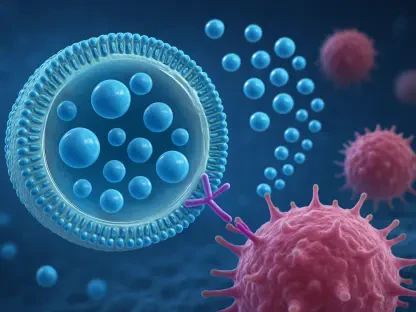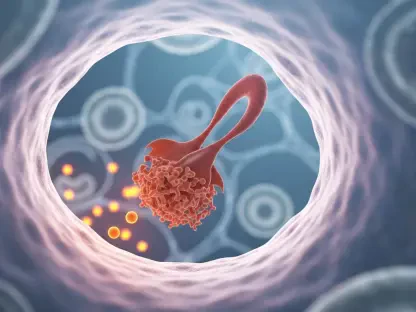What if a disease as deadly as pancreatic cancer, known for its stubborn return even after grueling treatments, could be tamed by a single, precise strike during surgery? At Johns Hopkins Kimmel Cancer Center, a groundbreaking approach using intraoperative radiation therapy (IORT) has slashed local recurrence rates to an astonishing 5%. This isn’t just a number—it’s a beacon of possibility for thousands of patients battling one of the most lethal cancers, where survival often feels like a long shot. This remarkable achievement challenges everything known about the disease’s relentless nature and opens a door to a future where recurrence might no longer haunt survivors.
Why This Breakthrough Matters
Pancreatic cancer has long been a grim diagnosis, with a five-year survival rate lingering below 12% for most patients. Even when surgery offers a chance to remove the tumor, nearly half of those cases see the cancer return locally within a couple of years, often proving fatal. The significance of reducing recurrence to just 5% cannot be overstated—it represents a seismic shift in outcomes for a disease that has defied medical advances for decades. This development, driven by meticulous research and innovative technology at Johns Hopkins, signals a turning point, offering not just extended life but a renewed sense of hope for patients and families.
The Daunting Reality of Pancreatic Cancer
Pancreatic cancer’s lethality stems from its silent progression, often remaining undetected until it has invaded critical blood vessels or spread to surrounding tissues. At this stage, surgical removal becomes a complex puzzle, with many patients deemed ineligible due to the tumor’s location. For those who do undergo surgery, the risk of microscopic cancer cells lingering nearby creates a constant threat of recurrence, undermining even the most aggressive treatments. This persistent challenge has fueled an urgent need for strategies that address not just the visible tumor but the invisible seeds of its return.
A Game-Changing Discovery: The Baltimore Triangle
Central to this breakthrough is the identification of a critical area above the pancreas, dubbed the “Baltimore Triangle” by researchers at Johns Hopkins. This nerve-dense, fatty region has been pinpointed as a primary hotspot for cancer cell spread, driving high recurrence rates. By targeting this zone with presurgical radiation, the team initially cut recurrence from 47% to 12% at the two-year mark post-surgery. That alone was a significant leap, but it was only the first step in a carefully layered strategy to outsmart the disease at its most vulnerable points.
Precision in Action: How IORT Works
The real game-changer came during surgery with the use of intraoperative radiation therapy. After removing the tumor, surgeons deliver a concentrated dose of radiation directly to the Baltimore Triangle using a robotic device equipped with tiny radioactive beads. To ensure safety, parts of the small intestine are temporarily moved aside, allowing precise access without harming nearby organs. In a study of 20 patients with borderline resectable or locally advanced pancreatic cancer, this approach drove recurrence down to an unprecedented 5% after 24 months, setting a new benchmark in treatment outcomes and showcasing the power of combining surgical expertise with cutting-edge tools.
Voices of Optimism from the Frontlines
“This result redefines what’s achievable for pancreatic cancer patients,” said Associate Professor Amol Narang, M.D., a lead researcher on the study, during a presentation at the American Society for Radiation Oncology annual meeting this year. His words carry the weight of years spent battling a disease that often leaves little room for optimism. Dr. Narang emphasized that focusing on the Baltimore Triangle reflects a broader shift toward precision medicine, where treatments zero in on the specific behaviors of cancer at a microscopic level. Though the study’s small sample size calls for cautious interpretation, the near-elimination of local recurrence in this group has sparked excitement among experts eager to see these findings tested in larger populations.
Overcoming Hurdles and Refining the Approach
Despite the staggering success, challenges remain on the path to perfecting this method. The single recurrence in the study occurred in a difficult-to-reach section of the Baltimore Triangle, highlighting a gap in current techniques. The Johns Hopkins team is already at work developing enhanced methods to ensure comprehensive targeting during surgery, aiming for a recurrence rate of zero. This determination to address even the smallest setbacks underscores a commitment to continuous improvement, ensuring that no patient is left behind in the fight against this formidable disease.
Scaling Up: The Road to Wider Impact
Looking ahead, the next phase involves expanding access to this transformative therapy through collaboration with other cancer centers. Plans for multicenter clinical trials are in motion to validate these results across diverse patient groups, a crucial step toward making IORT a standard part of pancreatic cancer care. Hospitals are also encouraged to explore integrating presurgical chemotherapy, radiation, and intraoperative techniques into seamless protocols, fostering teamwork between oncologists and surgeons. These efforts lay the groundwork for turning a promising study into a widespread lifeline for those in need.
A Milestone That Echoed Hope
Looking back, the journey to a 5% recurrence rate for pancreatic cancer stood as a testament to relentless innovation and unwavering dedication at Johns Hopkins. The pinpoint focus on the Baltimore Triangle and the precision of intraoperative radiation therapy marked a historic moment in oncology. As researchers pushed forward with refined techniques and broader trials in the years that followed, that initial breakthrough remained a powerful reminder of what was possible. For patients and clinicians, the path ahead involved staying engaged with emerging trials, advocating for access to cutting-edge treatments, and supporting the collaborative efforts needed to transform this milestone into a lasting standard of care.









